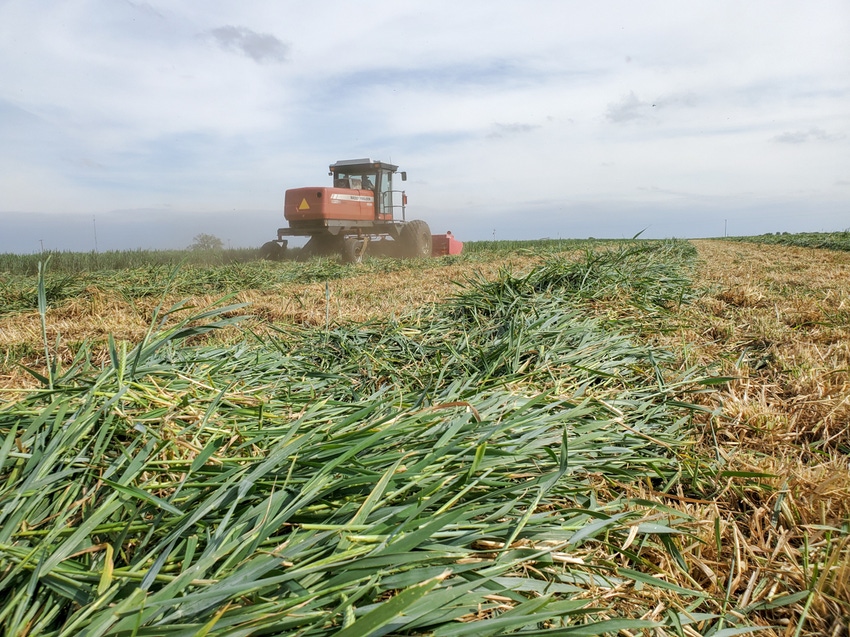November 18, 2019

Brazil appears to be taking over the corn export market like it did with soybeans and like the Black Sea exporters did with wheat. Changes in the corn export market may lower long-term U.S. corn prices. And, because a certain percentage of wheat is sold for feed, the changes may also lower long-term wheat prices.
A recent headline read, “Brazilian corn muscles in on turf of U.S. exporters (Braun - Reuters News, 13 Nov 2019). The article reports that Brazil has exported 60% more corn than during the same period last year, while U.S. corn exports are down 40%.
The article states, “Brazilian corn exporters are enjoying a banner year thanks to a big crop and improved logistics, burnishing the country's status as a top global corn supplier and threatening the United States' traditional dominance in the arena.”
It also says that “The United States is likely to remain the leading exporter for now, but Brazilian corn has recently been capturing more business from traditional U.S. customers than before.”
See, COTTON SPIN: Big cuts to U.S. cotton production and stocks
Research shows that, since 1999, Brazilian corn production has increased from 1.25 billion bushels to 3.98 billion bushels. Brazilian corn exports increased from nine million bushels in the 1999/00 marketing year to 1.6 billion bushels in 2008/19. During the same 20-year period, U.S. corn exports have remained about the same.
From a bushels of corn exported viewpoint, Brazil is not reducing the number of U.S. bushels exported. However, Brazil’s percentage of the world’s corn exports has increased from 0.3% during the 1999/00 marketing year to 23% during 2018/19. The percentage of the world’s corn exports from the U.S. declined from 65% to 29%.
During the 1999/00 corn marketing year, Argentina exported 16% of the world’s corn exports. Argentina’s corn export percentage had increased to 20% by 2018/19.
Combining Brazil and Argentina’s percentages of the world’s corn exports, the combined percentage increased from 16% in 1999/00 to 43% in 2018/19. South American corn exports surpassed U.S. corn exports in the 2011/12 marketing year.
South American (Brazil and Argentina) soybean exports surpassed U.S. soybean exports in the 2003/04 marketing year. Brazil’s soybean exports, alone, surpassed U.S. soybean exports in the 2012/13 marketing year.
Before the 1977/78 soybean marketing year, the U.S. exported 96% of the world’s soybean exports. In 1977, Argentina captured 8% of the world soybean market, and Brazil captured 4%. During the 2018/19 marketing year, Brazil controlled 51%, and Argentina controlled 6% of the world’s soybean market. The U.S. controlled 32%.
The only difference in the wheat export market story is, instead of South America, it was Black Sea exporters (Russia, Ukraine, and Kazakhstan) that replaced the U.S. as the leading exporter of wheat. The Black Sea exporters’ wheat exports (hard red winter and hard red spring) surpassed U.S. wheat exports during the 2008/09 marketing year.
During the last three marketing years, Black Sea exporters have exported an average of 35% of the world’s wheat exports. United States’ wheat exports have averaged 14% of world wheat exports.
The world and its markets continue to change. The good news is that world demand for wheat, corn, and soybeans has grown and continues to grow. During the last 20 years (1999 – 2018), world wheat exports have increased 78%, corn exports have increased 181%, and soybeans exports have increased 228%.
While other countries may export more wheat, corn, and soybeans than the U.S., the fact remains that the U.S. will remain a major player in the wheat, corn and soybean market. That is good news for American farmers.
About the Author(s)
You May Also Like






